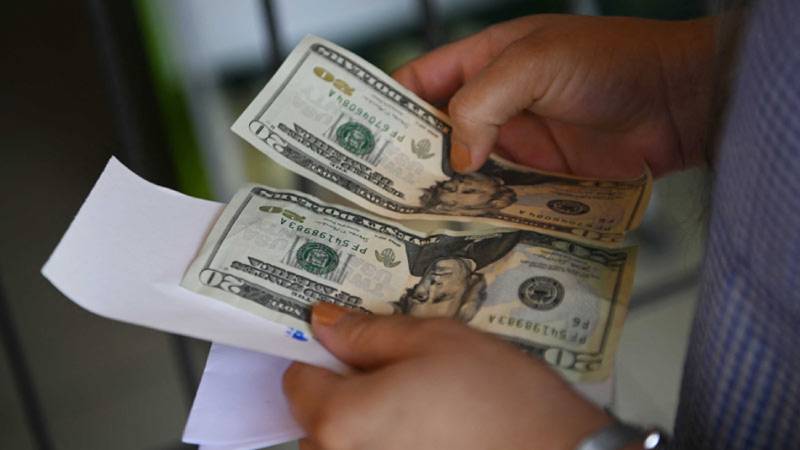A recent report by the Inter-American Dialogue states that the country has a low growth rate of remittances compared to other countries in the region. According to the organization, the percentage they occupy in relation to GDP has also decreased in 2022.
April 23, 2023 – 21:48
the Slowing conversion rate What Salvadorans send abroad is something that economists and experts have been stating for months, and in fact, data for the country, when comparing figures from previous years with those for 2022, confirms this.
Something that catches the eye, however, is the data provided by a recent report by the organization Dialogue among Americans (The Dialogue, in English), which summarizes in numbers how remittances have behaved in the region over the past year. And at this point. The country continues to have one of the lowest growth rates in the region.
You may be interested in: Foreign investment declined in 2022, despite the exclusion system in place
This is due to the fact that countries like Nicaragua and Guatemala have managed to stand out in the context of the economic slowdown, especially in the United States, the country that is the source of most of the remittances sent to Latin American countries.
Specifically, Nicaragua had a growth of up to 49% in remittances received last year and in relation to 2021, which means that Nicaraguans abroad sent up to $3203 million to their country, which is a figure, despite the strong growth in terms of value Relativity. , is the lowest among other countries.

The opposite case is that of Guatemala, the country of 2.28 million Guatemalans who send remittances home to their families from abroad, which over the course of 2022 has accumulated a total of $19,402 million, more than double that of El Salvador. , despite having “only” 700,000 senders. More than 1.56 million people, according to The Dialogue, are Salvadorans in the diaspora.
With regard to El Salvador, specifically, the Central Reserve Bank (BCR) confirmed at the beginning of this year that the growth in this income that the country receives at the end of 2022 was only 3.2%, a value that is very far from the recovery until the 26.6% they witnessed this indicator by 2021.
next to: How to make an income statement in 7 steps
In monetary terms, at the end of last year, Salvadorans in the diaspora were able to send up to $7.742 million in remittances back to their families in the country, a figure that according to The Dialogue represents as much as 27% of the national GDP (Gross Domestic Product). .
In this sense, it is also remarkable that, although it is true that the Salvadoran economy managed to grow “only” 2.6% in 2022, the remittances index could not increase in parallel, because in fact, in 2021, the percentage output Gross Domestic said that this revenue accounted for as much as 29%, which means that the slowdown in this area is a unifying fact since last year.
Previously, economists explained to El Diario de Hoy that the macroeconomic situation in the United States will have impacts in two specific areas: exports, and specifically remittances.
This situation includes the constant inflation that, for a year and a half, has affected American citizens and immigrants from other countries, which in turn has reduced the purchasing power of people, because they have to allocate more money to purchase consumer goods, mainly. food.
Likewise, the various measures of the Federal Reserve (Central Bank) in that country, such as higher interest rates, have hampered the economic dynamics, due to the fact that loans to companies have become more expensive, and therefore, the risk of the economy going backwards still remains.
However, the most recent data from that country’s financial authorities indicates that, as of March, inflation has fallen slightly and stood at 5%.
also: El Salvador is the least developed country in Central America in 2023, according to Cepal
It is clear that these conditions have affected the flow of remittances that come into the country, and although it increased significantly in Guatemala, the central bank of that country attributes the increase to the “efforts” of Guatemalans in the territory of the United States, while the World Bank notes that Good data on employment in the last year in the US could also have contributed to the increase in the data.
However, despite the fact that the component has grown in other countries, in El Salvador, in fact, there is also a slowdown in the growth rate in January and February compared to previous years, with a percentage increase of 5.2%, according to BCR data.
According to The Dialogue, up to $150 billion in money transfers were mobilized across the region during 2022, including about 40 million transactions and up to 26 million senders.

“Social media evangelist. Student. Reader. Troublemaker. Typical introvert.”

:quality(85)/cloudfront-us-east-1.images.arcpublishing.com/infobae/TEQF6EONZRFGLLLDIDD4L2O4EE.jpg)

:quality(75)/cloudfront-us-east-1.images.arcpublishing.com/elcomercio/XU32LRAEZFDDPNVHLFU3CKVBYY.jpg)


More Stories
Bank of America has taken a drastic measure that could affect thousands of customers
With the effect of lifting, illuminating and moisturizing
$1 bills can cost up to $150,000 due to a printing error